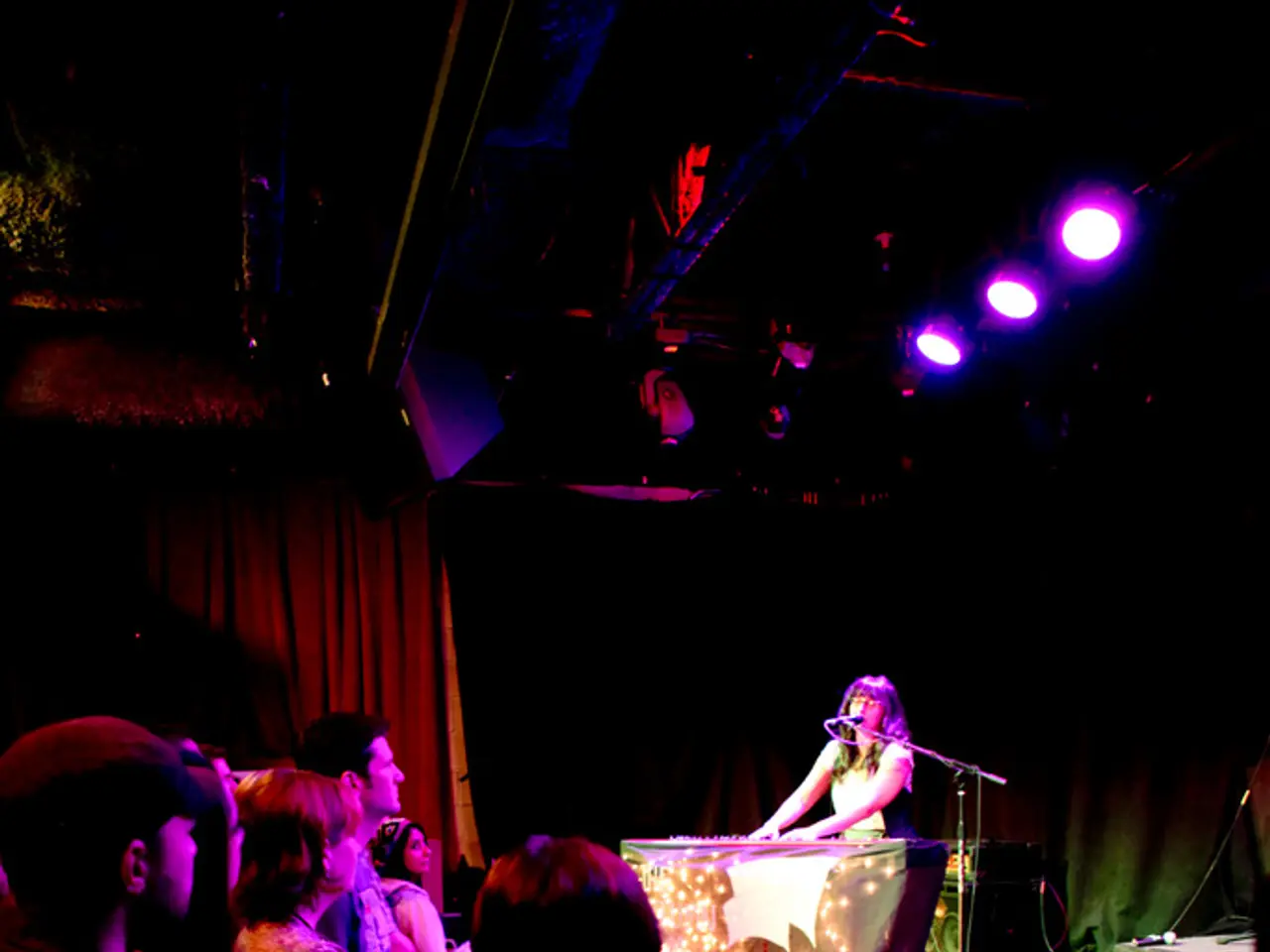Revealing the Enchantment: Examining the Names Behind Stage Draperies
In the realm of live performance, the stage is more than just a platform for actors and dancers. It's a canvas painted with lights, sounds, and, of course, the mesmerizing proscenium curtains. This article takes you on a journey through the history, types, and significance of these theatrical elements that have evolved from practical necessities to aesthetic and functional tools.
Proscenium curtains, positioned at the front of the stage opening, serve as a key theatrical element that visually separates the stage from the audience. Originating from the proscenium stage, characterized by a large "picture frame" or arch, these curtains play a crucial role in marking the start and end of performances.
Historically, early proscenium curtains were made of safety materials like asbestos, such as the original curtain at the St. James Theatre. As the development of Western theater architecture progressed, the proscenium curtain became a theatrical necessity, evolving from the early Greek theater forms where curtains were not used.
There are several types of proscenium curtains, including the grand drape (main curtain), traveler curtains, Austrian curtains, legs, and borders. The grand drape is the primary front curtain that opens and closes at the start and end of acts, while traveler curtains part in the middle horizontally to reveal the stage. Austrian curtains are raised and gathered in vertical folds, and legs and borders are side and top masking curtains that work in conjunction to mask offstage areas.
Modern stage curtains often incorporate lighting technology for added dramatic effect, allowing for mesmerizing light shows that enhance the onstage action. In concert venues, the use of front stage curtains can create a dramatic flair during music performances, enhancing the overall entertainment experience.
Maintaining front stage curtains is vital for ensuring they remain in good condition. Regular cleaning, inspection, and repair are essential practices to keep these theatrical tools in top shape. The color and texture of front stage curtains contribute to the overall visual design of a performance, complementing the stage set and creating a cohesive aesthetic.
Manufacturers produce curtains made from sustainable materials, such as recycled or biodegradable sources, to appeal to eco-conscious theatres. The choice of material influences the look, feel, acoustics, and lighting on stage. Curtains in different performance arenas each have unique characteristics that cater to the specific needs of the performances.
Front stage curtains symbolize the boundary between reality and performance, reflecting the preparations and behind-the-scenes work that goes into creating a theatrical experience. The curtain embodies the secrets and mysteries of the theatrical world, fueling the audience's curiosity about what lies behind the curtain.
In opera houses, proscenium curtains feature elaborate designs and sumptuous materials, reflecting the grandeur of the operatic genre. The color of front stage curtains plays a substantial role in the overall aesthetic and emotional tone of a performance, with traditional colors like deep red or gold evoking feelings of warmth and grandeur. The color of the curtains interacts with stage lighting, affecting how actors are perceived under certain lighting conditions.
The front stage curtains create anticipation and excitement among the audience as they signal the beginning of the performance. They operate based on a rigging system that allows them to open and close smoothly, enabling dynamic scene transitions. The use of curtains in theatre dates back to ancient Greece, where they were used to separate the audience from the performers.
By the Renaissance period, these curtains evolved, becoming richly decorated and more intricate in design. Today, customization of front stage curtains is possible, allowing for personalization that aligns with the overall theme of the theater or the particular performance. This level of personalization can extend to functional features, such as varying degrees of opacity or special treatments to enhance sound absorption properties.
In dance and ballet performances, proscenium curtains contribute significantly to establishing tone and setting, often used for effects like dimming the lights before performances. Proscenium curtains mask the backstage area while waiting for the performance to begin, and can slide open or raise to reveal the action on stage. Automatic curtain systems have been adopted by many theatres, facilitating quick and efficient scene transitions and enhancing the overall performance flow.
Traveler curtains are a type of front stage curtain that can move from side to side on a track system, allowing for quick scene changes and offering flexibility in staging. The front stage curtains, also known as proscenium curtains, are visual separators between the audience and performers, typically positioned at the front of the stage.
In conclusion, proscenium curtains have evolved from safety and practical needs in framed stages to being primarily aesthetic and functional theatrical tools. They have played a significant role in the development of Western theater architecture, from ancient Greek theater architectures to the modern commercial theatres of the 19th and 20th centuries.
Proscenium curtains, beyond just separating the stage from the audience, serve as a crucial aesthetic tool, contributing to the overall visual design of a performance through their color and texture.In entertainment settings such as concert venues and dance halls, front stage curtains enhance the overall experience by adding a dramatic flair during performances.







